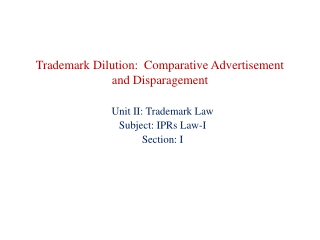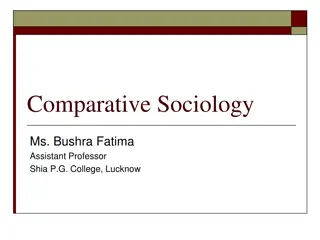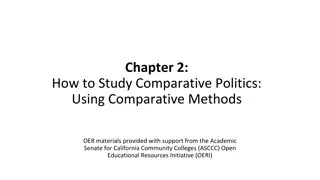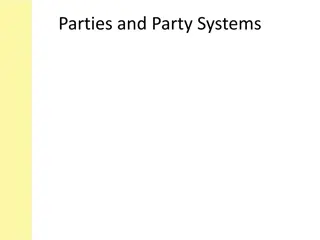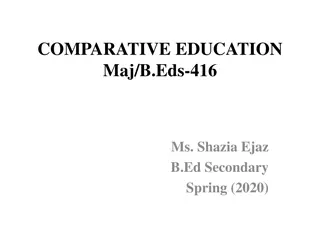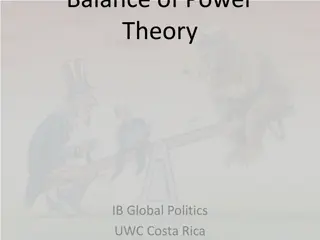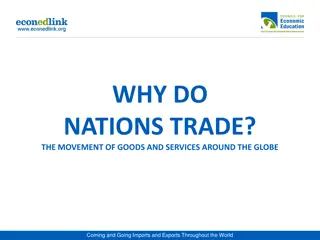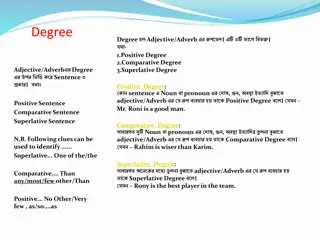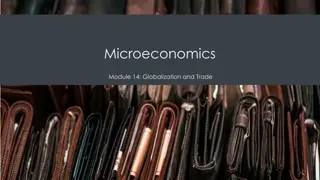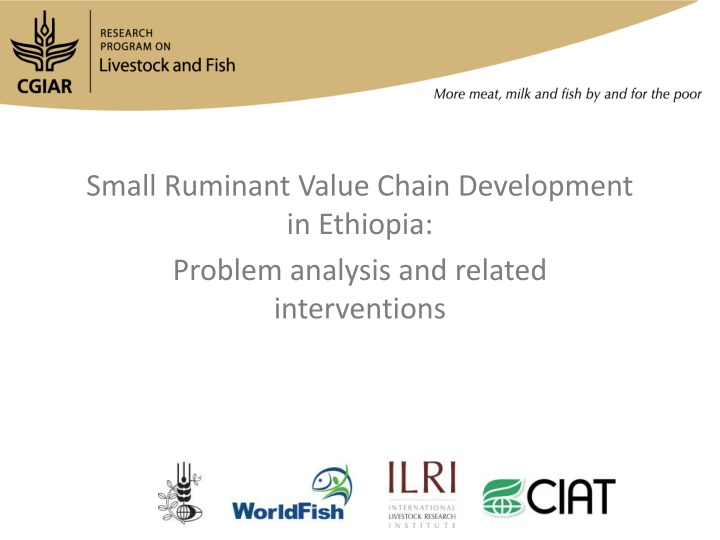
Comparative Politics: Studying the Politics of States
Comparative politics delves into the domestic politics of states worldwide, involving comparisons across countries, themes, and time periods. Scholars specialize in regions like Europe, Africa, Latin America, and South Asia, aiming to explain state-society dynamics and grassroots movements. This field distinctively analyzes internal workings of states, differentiating itself from international relations and foreign policy studies.
Download Presentation

Please find below an Image/Link to download the presentation.
The content on the website is provided AS IS for your information and personal use only. It may not be sold, licensed, or shared on other websites without obtaining consent from the author. If you encounter any issues during the download, it is possible that the publisher has removed the file from their server.
You are allowed to download the files provided on this website for personal or commercial use, subject to the condition that they are used lawfully. All files are the property of their respective owners.
The content on the website is provided AS IS for your information and personal use only. It may not be sold, licensed, or shared on other websites without obtaining consent from the author.
E N D
Presentation Transcript
Small Ruminant Value Chain Development in Ethiopia: Problem analysis and related interventions
Constraints in Input supplies Inadequate veterinary services: 1) transport, 2) facilities & equipment, 3) drug supplies, 4) budget/procurement process, 5) staff Shortage of effective vaccines: 1) quantity, 2) wrong strains, 3) cold chain Private sellers of drugs not reliable (regulations not enforced) Shortage of private vet services and drug shops in the woreda Lack of flexibility in the credit system (inconvenience of having group collateral, insufficient amount of credit; High interest rate; only DESCI, no local saving and credit association) Shortage of male breeding animals: 1) early sales, 2) no selection, 3) inbreeding Shortage of forages (planting material and seeds) Lack of feed supply
Constraints in production High prevalence of disease (CCPP, PPR, Goat Pox, Coenurosis, Trypanosomiasis) and parasites (ticks, lice, mange mites, Haemonchus, etc.) Feed shortage (availability, seasonality, quality, supplementation) site specific Limited knowledge and skills in feed resource management (optimal harvesting time, storage, use of improved varieties, grassland management) Limited awareness of importance of agro-industrial by-products and manufactured feed Lack of awareness on improved goat production (traditional feeding) and husbandry practices and marketing Low performance of local breed/Unimproved breeding and reproduction Poor housing
Constraints in marketing Lack of livestock market information Lack of vertical linkage of goat producers to the other market actors Weak horizontal linkage among goat producers No market infrastructure and transparent prices; poorly constructed marketing yards, lack of facilities (vet, water, feeding, loading, etc) Long distance between production areas and livestock markets Seasonality of (inconsistent) supply and demand Lack of market regulations encouraging unlicensed traders and brokers Double taxation when crossing regional borders Transportation problem (adequate trucks, trekking) Flow of animals to informal cross border trade limiting no ofanimals coming to the formal market Frequent clan conflict on feed and water that destabilize the market Lack of working capital for traders
Constraints in processing Low quality of animals supplied to the local and export market Low carcass percentage Red offals are often condemned due to disease and parasites Poor slaughtering skills that spoils the quality of meat and skin Back yard slaughtering of animals (threat for public health) Marketing of pregnant ewes Low level of food preparation skills in the hotels and restaurants of the area No facility to process by-products from sheep/goat slaughtering Short shelf life of milk due to poor handling and management, lack of milk containers and equipment
Constraints in consumption High meat price Poor quality meat
Lack of effective agric. policies and institutions Lack of research and technology transfer Degradation of resource base Insufficient feed resources (climate and land availability) Poorly developed markets Disease pressure THE CAUSES Inadequate input supplies Lack of proper SR management Shortage of feed High livestock mortality Weak linkages between producers and markets THE CORE PROBLEM Poor performance of sheep and goat value chains Food insecurity ASF quality and safety Low income of VC actors High market prices THE IMPACT Poverty Malnutrition Hidden hunger Migration WHOLE VALUE CHAIN PROCESSING MARKETING CONSUMPTION INPUTS & SERVICES PRODUCTION
Suggested interventions related to inputs Vet services Allocating more funds for procurement of vet equipment/reopening of health posts Provision of transportation facilities for animal health workers Revolving funds for procuring drugs Recruit CAHWs and develop business models Refresher courses for CAHWsa and vet technicians Rules and regulations on vet drug import and distribution Credits Discuss with Credit and Saving Institutions on issues related to flexibility, (group collateral , loan size and interest rate) Strengthen credit and saving associations in terms of finance and management
Suggested interventions related to inputs Feed supplies Encourage suppliers of small scale feed suppliers (e.g. by- products, concentrate feeds) Formation of feed producer cooperatives and/or a closer look why existing farmer cooperatives do not sustain their feed supply demand Timely delivery of forage basic/certified seeds Improved forage seed production Encourage suppliers of raw materials for the competing uses (fuel, construction/roofing) of crop residues and hays
Suggested interventions related to production Need based training of extension agents and producers in goat and sheep production and management with special focus on feeding using the locally available feed resources Expansion of health posts and training of vet technicians Training extension agents, CAHWs and farmers in goat disease prevention and control Awareness raising of pastoralists/producers for health care Provision of regular vaccination and treatment Monitor efficacy of anthelmintic drugs Epidemiological studies on prevalent diseases Genetic improvement program (controlled mating, fertility management and selection)
Suggested interventions related to marketing Institutionalizing data collection and transmission from livestock markets in the woreda Linking the woreda with national livestock market information system and develop delivery system Strengthening/Establishing producer marketing cooperatives Capacity building in terms of management capacity and market linkages and finance Multi stakeholders platform to discuss major marketing problems, find common solutions and create market linkage between producers and other actors Organizational capacity building, identification of institutional models that would work (e.g forage seed supply, agribusiness development) Facilitate experience sharing through tours/visits for improved market linkages Encourage and support meat processing and export to create non seasonal demand encouraging producers to supply animals regardless of seasons Training of farmers and extension on fattening Market regulations
Suggested interventions related to processing Improve nutrition and health of animals Training producers in feeding to condition animals for marketing Support livestock marketing cooperatives to enter into goat fattening/conditioning business Banning backyard slaughter of any animal Organizing the unemployed youth in groups and train them in slaughtering techniques, linking them to municipal abattoirs Supporting the town administrations so that they will create awareness of hotels and restaurants in using qualified chefs Training in milk handling and quality assurance -

